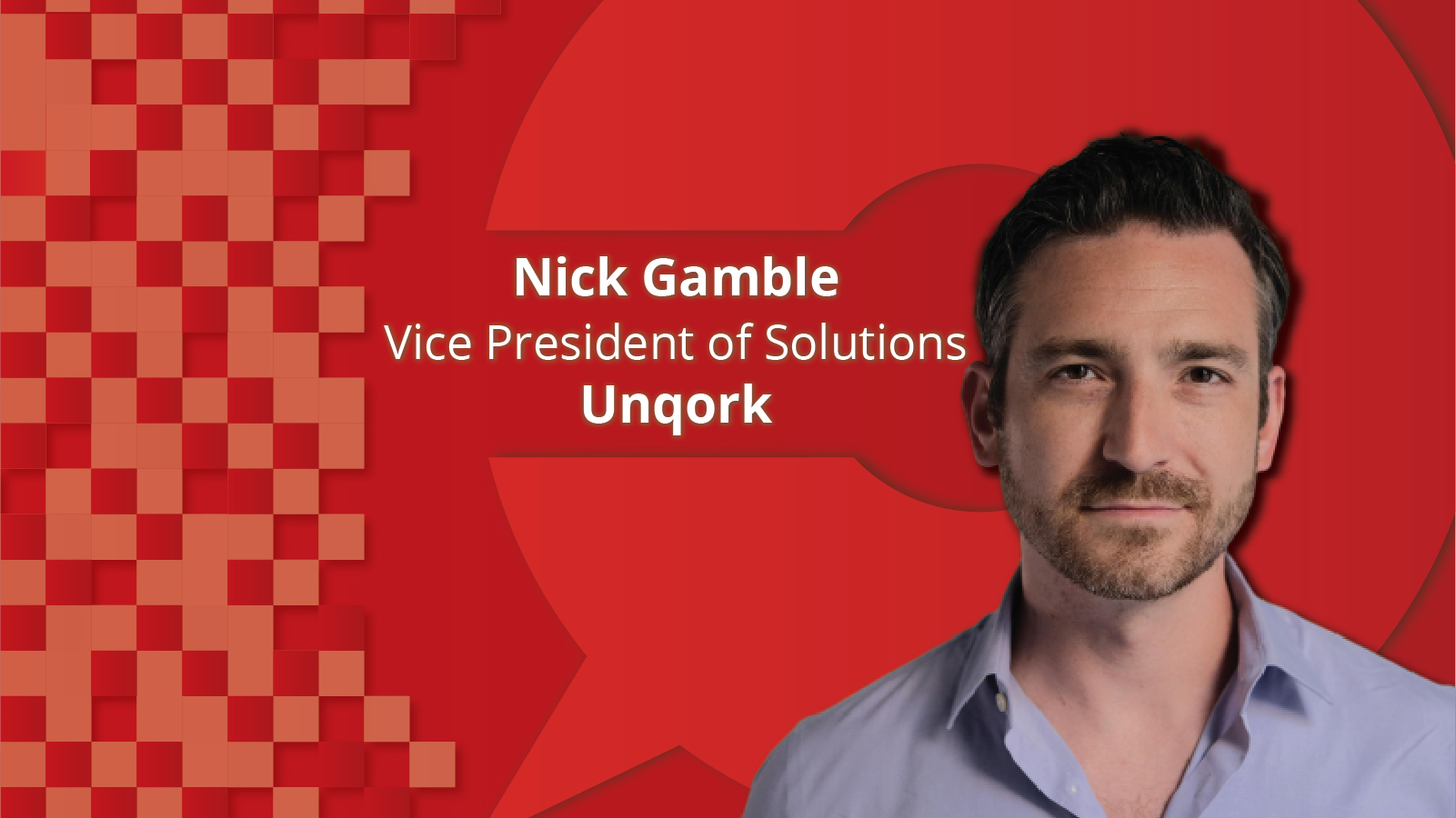“To help developers move as quickly as possible, vendors and enterprises alike will place an increased emphasis on consolidating tools and creating easy-to-use integration pathways,”
Nick Gamble, Vice President of Solutions, Unqork
In today’s constantly changing enterprise landscape, how can enterprise applications and features work faster?
Nick Gamble: Today, it is more important than ever that enterprises modernize their software. The events of 2020 accelerated the digital transformations that were already underway in many companies, bringing new urgency to efforts to digitize. Effective, modern software is no longer a “nice-to-have” — it’s essential for every company to stay competitive and deliver on what their customers expect.
To meet these expectations, enterprises spend $500B annually (Gartner) to build and maintain applications with legacy code. Most of this work falls on in-house tech teams, who are also tasked with the burden of managing a remote-first work environment. All of this has created a situation in which engineering and IT teams are treading water, barely even maintaining existing software. Ask most software engineers, and they’ll tell you that they spend most of their day fixing bugs and addressing security vulnerabilities. When they do find the time to dedicate to building new software, code-based methods weigh down the pace of innovation. New projects can take 12-18 months to launch and are vulnerable to failure from various factors – requirements change, funding shifts or developers switch jobs.
It’s clear that the status quo — coding — isn’t working. Enterprises need a way to build complex, mission-critical software faster. There’s a surge of interest in no-code and low-code technologies from enterprise users in response to this. Gartner recently estimated that by 2025, about 70% of enterprise apps would be built with no-code or low-code. If this prediction does, in fact, pan out (which I expect it will), there will soon come a time when every company will need a no-code strategy and every engineer and tech team member will need to know how to use no-code or low-code tools. The most innovative enterprises will be those that start to implement these changes now.
How can enterprises accelerate their application development process without sacrificing quality or creating a legacy?
Nick Gamble: Most large enterprises are drowning in legacy applications. At large, established enterprises – e.g., insurance companies, banks, city governments, health systems – there is often decades-worth of legacy code underpinning mission-critical applications. The issues with legacy systems are the same with the problems with code — very few people know how to build and maintain legacy systems (only .5% of the world’s population knows how to code), they contain code-based vulnerabilities that go undetected or unresolved until after a significant security incident, and they are extremely time-consuming to build and maintain.
Both no-code and low-code can accelerate application development, which is why they are frequently lumped together in conversations about innovations in enterprise software development. But they reflect fundamentally different approaches. The important distinction comes with quality and legacy. With low-code, IT teams are able to build about 80% of a product with pre-packaged code, but it’s still generating legacy – they still have to rely on code to finish the project and maintain it thereafter. And, they are still susceptible to code-based vulnerabilities – on average, there is one bug per 50 lines of code.
Addressing these challenges requires an approach that both helps reduce the burden of maintenance on tech teams, and enables them to build new software faster. That’s where no-code comes in. No-code allows for hyper-accelerated application development while simultaneously reducing the burden of maintenance and increasing quality.
What steps can enterprises take to keep their employees engaged in today’s hybrid work model?
Nick Gamble: At Unqork, we’ve tried hard to maintain the social aspects of the workplace and find time for the whole company to come together. Since going remote, we’ve continued to hold our company-wide weekly standup meeting as a way to bring everyone together and share updates to help people stay engaged and informed about what’s going on across the company.
We’ve also been flexible about where people work from. Personally, I’ve found that a change of scenery has helped me stay engaged. Of course, everyone has varying levels of flexibility in where they can work, but sometimes even just changing rooms or working outside for a few hours can help you feel energized and engaged.
What trends do you think will emerge in the application development process in the foreseeable future?
Nick Gamble: As software becomes more and more essential to business success and enterprises look to move away from code-based methods, there is a natural expansion of who is involved in the software development process. Where software development was once restricted to software engineers, there is now more opportunity to bring business users into the development process.
While software engineers will still ultimately be the ones to build software, they can bring other business stakeholders in to brainstorm or test software (even if they don’t know how to code). In addition to reducing the time between handoffs and shortening the overall development and iteration timeline, this helps cross-functional teams build quality software that better suits the unique needs of the business and their customers.
Automation will also become an essential part of digital transformation for all enterprises. Companies are already looking at their systems and asking, “What processes can we digitize?” More and more, companies will be asking, “What processes can we digitize and automate?”
And on the developer side, there will be a continued push to make things easier for the teams who are building and maintaining software. To help developers move as quickly as possible, vendors and enterprises alike will place an increased emphasis on consolidating tools and creating easy-to-use integration pathways.

































Leave a Reply